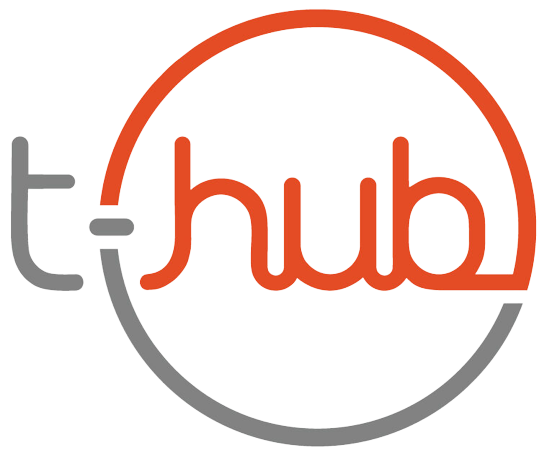With the ongoing coronavirus pandemic, we have all had to rethink our daily lives. Schools have shut, travelling has reduced, and where possible, companies have asked employees to work from home. Working remotely and collaborating across teams and with clients has become faster, easier and better with digitisation.
But until now, the number of employees who work remotely was limited. The pandemic is bringing about some seismic changes to the way businesses function. Many of the world’s largest companies have already told office workers around the globe to stay at home, including Ford, General Motors and Unilever, and many tech companies in Silicon Valley. As a result, there has been an increased demand for remote working and collaborative tools globally. So, let us look at some of the most popular tools from organisations across the world today and what this shift signifies.
Microsoft
Most of us are familiar with Microsoft’s popular Office 365 suite. For the present needs, Microsoft is also extending its service to remote access, teleconferencing and live document collaboration. Microsoft Teams, which is the business Skype subscriptions, is giving users access to larger group calls and document collaboration. While the app has limits on file storage and the ability to record meetings, the technology company is giving a free six-month trial of the premium ‘Teams’ chat app and 1TB of storage. Microsoft has also seen a 500 per cent increase in ‘Teams’ meetings, calling and conferences in China since the end of January along with a 20 per cent increase in its usage on mobile devices.
This tech giant is also giving free access to its remote working tools. Due to concerns fuelled by the pandemic, Google called off its annual I/O conference and began offering the popular G Suite, and G Suite for Education customers with free access to their Hangouts Meet video-conferencing service. Businesses and schools around the world can now host larger remote meetings and live stream with up to 100,000 viewers within a domain. While those features were typically only available in the Enterprise Edition, they will be free until July 1. As a result, hundreds and thousands of students whose schools have been shut in Hong Kong and Vietnam are using Hangouts Meet, a video-conferencing tool available to all G Suite users, and Google Classroom, to remotely join their classes and continue their schooling from home.
Zoom
Some companies are also providing resources and support in addition to their tools. Zoom, a remote conferencing service, has removed the 40-minute limit that it had on meetings with more than two participants and are providing unlimited time to collaborate for the basic (free) function users in China. They are also organising informational sessions and on-demand resources so that new joiners can learn to use the platform at their convenience. They have also offered their services to doctors in China to use Zoom for online consultations and diagnosing, including:
- Free services and technical support to NGOs to assist with disaster-relief efforts. They partnered with the Beijing Well-being Foundation and psychology professors from top universities to train 312,056 mental health counsellors and prepare them for psychological consultations with doctors, patients and their families in Wuhan. From January 29 to February 25, Zoom Video Webinars hosted 58 training sessions for these participants, with a total training duration of 84.6 hours.
- Many top universities such as the Tsinghua University, the University of Science and Technology of China, Nanjing University and Shenzhen University, are using the Zoom video conference platform to continue their teaching and research activities online.
- Telemedicine services where doctors from more than 1,000 public hospitals in China can use their video meetings to conduct online consultations, remotely diagnose patients and provide treatment during the coronavirus epidemic.
All of this has resulted in the expansion of the Zoom user base, and its shares have gone up by 11 per cent as on March.
Zoho
This software development company plans to provide Remotely, its remote collaboration tool, to everyone free of cost, till July 1. This suite of 10 communication and collaboration apps was designed to support and foster remote collaboration for Zoho’s internal operations. As a result, it has been easier for the company to scale up and offer the same services to everyone. This platform intends to create a holistic functional online team workspace in the current circumstances. It includes Cliq team communication software, Zoho Meetings for virtual meetings and ShowTime for conferences. To enable collaboration from different locations in their ongoing tasks, teams can also use the project management tools Zoho Projects and Sprints. Employees can also continue working smoothly by using the office suite (Writer, Sheet, Show) and online file management WorkDrive. Zoho is also encouraging companies to put their employees’ health and safety first and sharing some best practices for remote working based on their own experiences.
Cisco
This networking hardware company has released a free version of Webex, its video conferencing solution after it reported that the online traffic from China increased up to 22 times since the outbreak and signups from affected countries went up by seven times. In Japan, South Korea and Singapore, the average time spent on Webex video meetings doubled among users. Cisco is offering this tool for free under the 90-day license to businesses that are not its customers. For its existing customers, Cisco is expanding its usage at no additional cost. Some of the extra features are unlimited usage (no time restrictions) and supporting up to 100 participants.
Airmeet
More and more companies realise the importance of virtual meeting platforms now. This was best exemplified when an India-based online platform startup, Airmeet, recently received INR 22.20 crore in a fresh round of funding from a group of high-profile investors. Airmeet is an all-in-one platform to host, discover and attend fully remote events, such as professional meetings and conferences. What sets it apart from others in the industry is that it does not need an event organiser to have a subscription. Organisers can publish their event details online, manage registrations and go live with the event from a single interface. The platform is compatible with all modern browsers and does not require any downloads, either making it easy for attendees to log in. As of now, organisers can host events with an audience size of up to 1 million, which is large enough to accommodate even some of the biggest of currently existing physical meetings. With the new funds, the startup plans to enhance its technological infrastructure to expand the kinds of events the platform can host.
The New Norm
According to industry research, by 2030, the demand for remote work will increase by 30 per cent due to Generation Z fully entering the workforce.
As many as 64 per cent of today’s professionals say they could work anywhere, and remote work policies are common (in place at 71 per cent of organisations). Remote working is soon going to become the new norm. But before it does, there are a few concerns that need to be ironed out.
The sheer magnitude of this current endeavour is unprecedented. Many technology companies are testing their VPNs to ensure that they can handle so many people logging in all at once. When millions of Europeans logged into Microsoft Team from home at 9 am on March 16, the app crashed. Microsoft resolved the issue they very same day. Similarly, Google and Zoom plan to monitor their services and scale up their infrastructure to support higher demand and ensure streamlined, reliable access to the service throughout this period.
Ensuring cybersecurity should also be a top priority for organisations. Remote working opens up an organisation’s normal firewall defences. As more and more employees start connecting remotely, the organisation becomes more susceptible to malware or other malicious content. Organisations must provide their employees with the necessary cybersecurity awareness training to manage this risk.
As more and more organisations are compelled to embrace remote working, continuing operations without disruption is going to be challenging. But this can be mitigated to some extent if organisations apply the right tools and precautions. This period offers companies a chance to experiment with work-from-home models and find out which ones work best for them.







